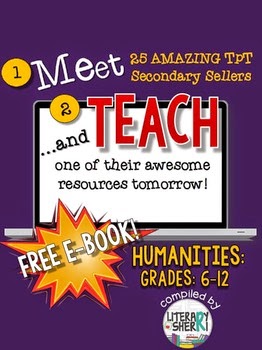Saturday, October 18, 2014
Tips for Teaching Grammar When You're not Supposed to be Teaching Grammar
The composition class I have been teaching for years is supposed to be all about research, critical thinking, and honing argumentative writing techniques. The students, allegedly, have already mastered basic grammar and writing skills. After the diagnostic essays on the first day, however, the same story emerges: the grammar mastery is shaky at best, and non-existent at worst. Over time, the topics that need the most review have held steady, and my teaching has evolved to meet this need.
Most of my students have gaps in their early education, or are returning to school after many years, so I am not so concerned that every student knows what a dangling whoseewhatsit is, but they need to review or be taught some basics in order to begin to present a coherent argument. The rest of it can be taken care of through critiques on their rough drafts. Through trial and error, and ultimately modest success, here are my best tips for teaching grammar when the class is supposed to be at the next level:
1. Couch everything as a "review" since you will have students for whom it is, indeed, review.
2. Even though it's a "review," start with the basic rules and don't assume previous knowledge.
3. Keep the terminology as basic as possible.
4. Start with a review of the parts of speech. I use a cooperative game for this one, and call it an "English Class Ice-Breaker," rather than a formal lesson.
5. Teach sentence fragments and clauses first, then move on to run-on sentences. These two items are the crux of most of the issues, and writing improves significantly with these two errors corrected.
6. Keep the lessons short and to the point. I use a short power point, handouts with the explanations they can study at home, and self-check practice quizzes.
7. Check for understanding with a self-check quiz. Offer to meet with the students who need more help or provide more resources. I often send students to interactive websites for practice. My current favorite is chompchomp.com.
8. Have students keep an "error journal" where they keep track of where they are making mistakes on their rough drafts. This will help them be self-aware and hopefully, self-correcting.
9. Do short writing exercises to practice the skills your class is really about, but each time, give special emphasis to one point of grammar and grade accordingly.
I would love some feedback on how you teach grammar in the classroom under similar circumstances.
If you'd like to use my resources, which include power points, worksheets, handouts, games, quizzes, and two comprehensive assessments, I've put them altogether in a money-saving bundle. These are what I use each quarter in my class. I hope you find them useful.
Thursday, October 9, 2014
Free Resources for Secondary Teachers
I am happy to say that my free Thesis Worksheet resource is now available. Brain Waves Instruction, Literary Sherri, and Getting Nerdy with Mel and Gerdy have compiled three free ebooks full of ready-to-print resources for secondary sellers. There are three ebooks, one for ELA, one for math and science, and one for humanities. My resource is included in the ELA book, plus there is a link to it in my store at the bottom of this post. Each book contains 25 resources, plus a little bit about each seller and the kinds of resources he or she offers. Check them out here:
Here is a link to my resource that you can download for free in my store:
Subscribe to:
Comments (Atom)







